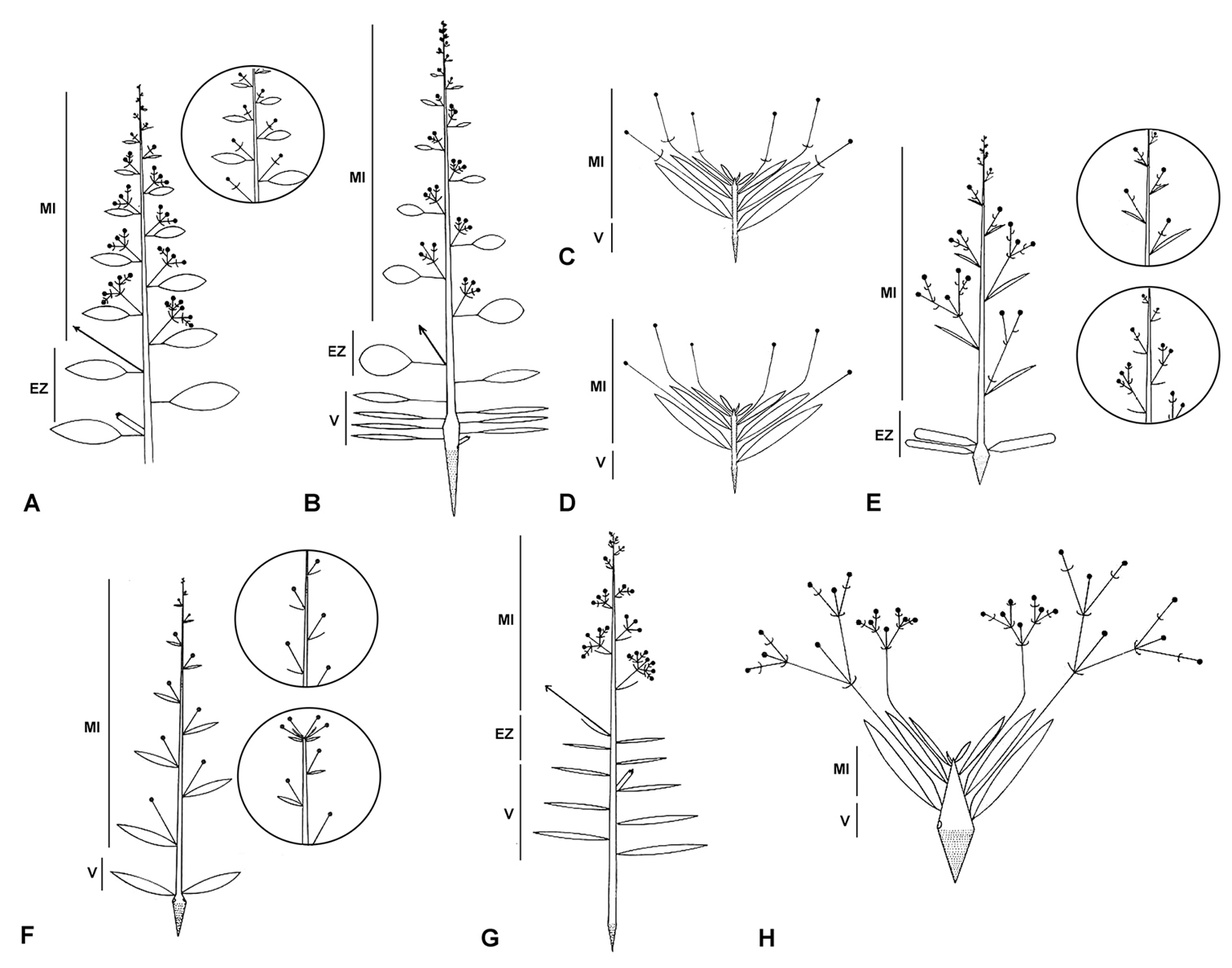
|
||
|
Characterisation of inflorescence structure in Goodenia s.l. modified from Carolin (1967a) with his corresponding Bauplan ‘Type’ concepts stated were applicable and phylogenetic position for exemplar species given in brackets; MI = main inflorescence, EZ = enrichment zone, V = vegetative zone. A Form A (Type 1) is a thyrse with leafy bracts and bracteoles e.g. Goodenia ovata (Goodenia I) or (Type 2) 1(–2)-flowered raceme with leafy bracts and bracteoles e.g. G. laevis (Goodenia I) (inset) B Form B (Type 5) is a basal rosette with leafy bracts and bracteoles e.g. G. hederacea (Goodenia II) C Form C (no Type) with flowers solitary in leaf axils, leafy bracts and bracteoles e.g. G. convexa (Goodenia II) D Form D (no Type) flowers solitary in leaf axils with leafy bracts, bracteoles absent e.g. G. pumilo (Porphyranthus I) E Form E (Type 4) a basal rosette, bracteoles, with leafy bracteose bracts and either a panicle-like form e.g. G. paniculata, raceme e.g. G. gracilis (Porphyranthus II) (inset above) or a thyrse e.g. G. pterigosperma (Coeruleae) (inset below) F Form F (Type 6) with ebracteolate racemes and leafy bracts e.g. G. hispida (Ebracteolatae II), (Type 7) non-leafy bracts e.g. G. cusackiana (Ebracteolatae I) (inset above), or (Type 8) a subumbel e.g. G . pulchella (Ebracteolatae I) (inset below) G Form G (Type 3) represented by a thyrse with reduced bracts and bracteoles e.g. G. scapigera (Monochila) and H Form H (Velleia Type) is a compound dichasium with leafy bracts and bracteoles e.g Velleia lyrata (Velleia). |